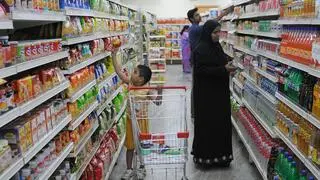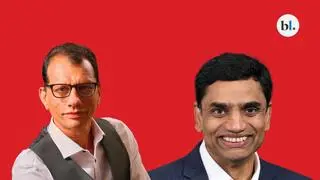Chitra Narayanan
Vinay Kamath
I always joke that I never had to leave the agency, as the agency itself kept changing,” says Tarun Rai, Chairman and CEO of India’s oldest multinational agency, which, five years from now, will be celebrating its 100th year in the country. J Walter Thompson started off in 1926 from a single room at the Taj Mahal Hotel, and Rai, who joined it in 1989, describes how from an account executive to becoming the chairman, the agency gave him so many career opportunities.
When Rai joined it, it was known as HTA (Hindustan Thompson Associates) as J Walter Thompson left India in 1968, handing over equity to its employees. In 2002, WPP – the world’s largest marketing communication network - bought back shares in the company from employees and the agency again became J Walter Thompson. In 2005, it adopted the crisper JWT moniker. And, in 2019, it became Wunderman Thompson, after the global merger with Wunderman.
New capabilities
“My own agency kept giving me so many opportunities that there was no reason to join anyone else,” says Rai, who faced the challenging task of leading the Wunderman Thompson merger in India in 2019. “Global mergers of this size and scale – of two equally big and competent organisations come with their own challenges. JWT had 10,000 people worldwide, Wunderman an equal number, and both were doing $ 1.3 billion or so of revenue,” says Rai.
However, he says the good thing was both had complementary capability. JWT was the expert in traditional communications while Wunderman was the whiz kid in data, technology, CRM.
Rai, says, in India, it was easy to effect the merger speedily and seamlessly, as unlike in the US and the UK, where both agencies were equally big, here JWT had over 1,000 people while Wunderman only had 25 people. “Nobody was insecure, there were no challenges of two people in the same position,” he says.
How the merger helped, he says, was to help the agency get new business from existing clients. “We could do much more for our existing clients compared to earlier because of the new capability. I always say one can get new business from new clients but better is new business from your existing clients.”
Wunderman, points out Rai, was ahead of the curve in digital. “This fast tracked a lot of the stuff for us. For a large agency to learn new tricks sometimes it is easier to get people who are ahead in it. Now we could offer end-to -end solutions, ranging from brand strategy, mainline communication to social media all the way down to last mile ecommerce solutions.
Partnerships matter
Rai describes how relationships matter in the agency business. “We grew up with relationships which went back to 50-60 years, we used to count our partnerships with clients in decades. Even for me, my first client was Hero, and it is still one of our largest clients. When I went back to one of their family events as a CEO, I was being introduced to the third generation of the family with pride saying he started his advertising career with us, he was an account executive then and now returned as CEO, and with a sense of pride that Hero had a lot to do with my career.”
Hero continues to be one of their largest clients, says Rai, as does Pepsi. “We launched Lehar Pepsi in India during Ramesh Vangal’s time and we handled it out of our Delhi office. Today Pepsi is our largest client, we handle 18 brands of Pepsi, including foods, 90-95 per cent of their business is handled by us.”
Similarly, he shares how Tata Steel induces a nostalgic feel in the agency. “I went to Jamshedpur for a visit and went to their museum and sure enough on one display was the first ever ad produced for Tata Steel by J Walter Thompson and they are still our clients.”
Rai talks about the fantastic campaign for Tata Steel – ‘We also make steel’, which, he points out is still remembered by people.
“We then did a new campaign for Tata Steel which said ‘we also make tomorrow’, and that did very well because people remember the old campaign so well,” he adds.
Thrown in at the deep end
The Delhi-born and bred Tarun Rai, actually meant to only make a brief stop in advertising – his goal was a career in marketing. But fate ordained other things. Rai, who grew up in a “gender-progressive” family of academics – both his parents were teachers, with his mom, the redoubtable Satya Rai being the first woman PhD in Delhi and first lady teacher in Hindu College - joined Asian Paints after his economics honours and MBA. “Compared to many other companies, the Asian Paints style of training young guys was to throw them in the deep end,” says Rai, adding, “In India if you want to make a career in advertising, you have to ideally start in sales and distribution because if you don’t have a connect with the last mile, you are missing out on a lot.”
After two years at Asian Paints, Rai felt he had to hop over to the other side and learn a bit about advertising, to help him with his marketing moves. But he never did move back.
“It was a combination of having fun; I was lucky to get excellent bosses (Mike Khanna, Nikhil Nehru among others,) and just before boredom could creep in, getting new assignments (heading JWT Kolkata as an independent profit centre and so on). “Before I knew it 19 years in advertising were over, sixteen more than I had planned,” says the tall, articulate ad man, who plays squash and golf.
Of course, Rai, did briefly venture outside advertising, after 19 years at JWT, joining the media business. He helmed Worldwide Media, a joint venture between BBC and Times Group for seven years, during which time he launched several magazines – his fondest memories being of the Good Food magazine, before returning to the JWT fold as head of the agency.
Speaking of food, conversation dives into Rai’s favourite restaurant – we are forced to do this Table Talk virtually, but if we were to meet him face to face, where would he take us? “Souk at the Taj,” says Rai without hesitation. “It offers unquestionably the best view of Mumbai – overlooking the Gateway of India,” he says, also waxing eloquent about its Mediterranean and Turkish fare.
Non-traditional business
Back to talking about advertising: ask him about Wunderman Thompson’s ranking today – after all, HTA was the biggest agency when he joined advertising, but the agency no longer seems to be on top. Rai at once says the problem with these rankings is with the measures. In the old days it used to be billings, now it is revenues. But nowadays, with advertising stretching into domains such as consulting, you don’t know what to include in your revenues, he says. “We don’t report numbers,” he is emphatic, when we ask.
So, where is growth coming from? Broadly speaking, we were growing at fast double digits every year before the pandemic. “As for the split on revenue, I always talk of traditional and non-traditional business revenues. In the good old days there were just three mediums to work with, but now there is digital, consulting, CRM, so many more. Currently, 40 per cent of our revenues is from non-traditional and is growing rapidly and the pandemic has only accelerated that growth, and I think in the next year or two years, it will be a nice 50:50. If we get to 50:50, I will be happy,” he says.
Rai is pretty gung-ho about the traditional side of the business too. “We are still an under-branded country if you look at advertising expenditure to GDP,” he says.
With the festive season underway, talk also gravitates to whether we are going to see an explosion of activity. Rai says there is a sense of déjà vu. “Last year, pre-festival season, we were advising clients, it was not a time to pull back and they needed to spend to unlock the pent-up demand. This year too, we had the same conversations,” he says. Strong brands cannot desert consumers,” he stresses on the need for advertising.
Definitely, there is more activity, more production and project-based work, which had dried up is back again.
Last words from the ad man: “My favourite phrase is love what you do, and do what you love. Then you don’t have to do a single day of work.”







Comments
Comments have to be in English, and in full sentences. They cannot be abusive or personal. Please abide by our community guidelines for posting your comments.
We have migrated to a new commenting platform. If you are already a registered user of TheHindu Businessline and logged in, you may continue to engage with our articles. If you do not have an account please register and login to post comments. Users can access their older comments by logging into their accounts on Vuukle.